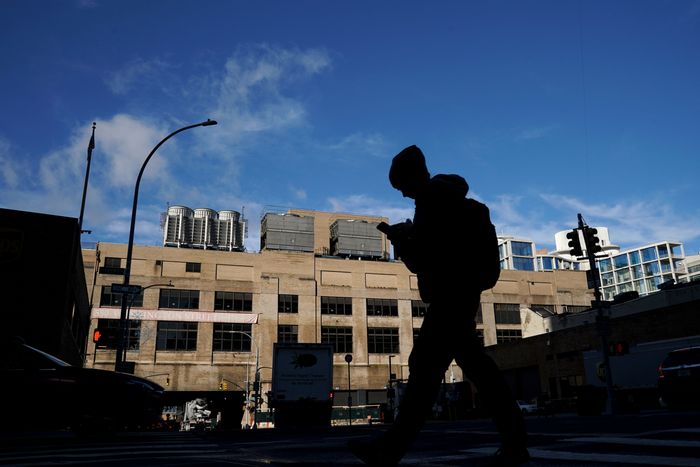
The Zeckendorfs — the developers behind 15 Central Park West, a.k.a. “Limestone Jesus,” the condo di tutti condos — are looking to do it again, this time downtown. They’re partnering with Atlas Capital to build a super-fancy $1 billion condo tower on the far western edge of Greenwich Village, the New York Post reports. The tower, a source told the paper, is “all but guaranteed to top every downtown sale price record,” fetching in the $5,000-per-square-foot range. It will also, thanks to the Pier 40 air rights, be about 400 feet tall, or 36 stories, more than double the height of most of the other high-end condos along West Street. Eye-popping numbers barely stir the blood these days, but these apartments are going to be extremely expensive.
Except that it wasn’t supposed to go quite this way. In 2016, the city approved a deal with the developers of St. John’s Terminal, the multi-block parcel from Clarkson to Spring Streets that includes this site. For $100 million, Westbrook Partners and Atlas Capital would buy the air rights of the crumbling Pier 40 across the street, allowing them to put up a five-building complex on the site. It would have office space and 1,586 apartments, 30 percent of which would be affordable. There’d also be a 15,000-square-foot public-recreation center. The city agreed to block future sales of air rights at Hudson River Park, avoiding the prospect of a wall of huge buildings facing the river. “This is a tremendous opportunity to save Pier 40 and to build the permanently affordable housing this community so badly needs,” Bill de Blasio said in a statement at the time.
Pier 40’s air rights sold for $100 million, and the pier itself got the money it needed for repairs, but when the luxury residential market cooled a short time later, the developers sold the southern portion of the site to Oxford Properties for $700 million. Oxford developed it as office space, and plans for the recreation center were dropped. Last fall, Google announced it was buying the office complex for $2.1 billion as the anchor for its Hudson Square campus.
And the 500 units of affordable housing that were supposed to be built? There was a loophole: Although all apartment towers built on the site had to be consistent with the de Blasio administration’s Mandatory Inclusionary Housing policy — that is, 30 percent affordable — according to the Department of City Planning, the developers weren’t required to build any housing at all. The Google campus contains offices, so it carries no affordable-housing requirement. The Second Coming of Limestone Jesus, however, will presumably not be able to duck the obligation. Zeckendorf Development didn’t respond when asked if the condo would have an affordable component. (City Planning said the affordable-housing requirement remains in place.) But even assuming it conforms with the law, this situation hints at a bait and switch: The Pier 40 rights were sold off with at least an understanding (if not an ironclad commitment) that the project would house 500 middle-income families along with the rich, and instead we will end up with Google and billionaires and a far smaller number of affordable apartments.
How many will actually be built is admittedly a guess because it hasn’t been made public how many units the Zeckendorf development will have. In 2018, Crain’s reported that, though the 1.3-acre site would accommodate about 420,000 square feet of market-rate housing — typically about 420 apartments — the developers were planning to build only about half that number to allow for larger units with an additional 105 to 200 units of affordable housing for seniors. It would be surprising if the apartments built here were anything other than palatial. (In the city’s highest-end buildings, apartments have been getting larger for some time with buyers combining units to make their apartments even more sprawling. Superior Ink, a nearby Related project, originally had 68 units when it was completed; it’s now down to 50.)
The Zeckendorfs have done some affordability horse-trading in the past. They were able, for example, to add 114,000 square feet to 15 Central Park West in exchange for building a 36,000-square-foot long-term shelter for women and children about 45 blocks north in Manhattan Valley. Even at the time, poor doors and other ways of segregating lower-income tenants from the rich were falling out of political favor — much, it seems, to the disappointment of William Lie Zeckendorf, who runs the company with his brother, Arthur. In 2015, he told the New York Times that he found the off-site arrangement superior. “You can create a lot more for less if you’re willing to move something 20 or 40 blocks away,” he said. “If we had done this on-site, it would have diminished both properties or drastically changed the nature of them.”





